What do candidates on the Design of Fire Alarm Systems training course actually do?
The Design of Fire Alarms course begins by looking at the Legislation, British Standards and Codes of Practice applicable to Fire Alarm Systems. The various requirements are explained, in particular the requirements of BS 5839-1 and BS5839-6. The issues affecting the decision whether or not to install a fire protection system and if so, which type to install, are then discussed. Candidates then learn about the three categories of system ie: M, P and L (Manual, Property and Life). The process of designating detector and sounder zones is then examined. We than explore the advantages and disadvantages of the three most commonly used fire alarm systems ie: 4 wire, 2 wire and analogue addressable, and the types of dwellings or premises to which each system is best suited.
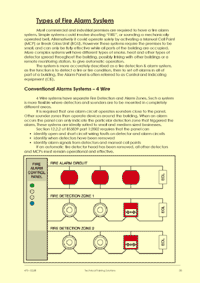 |
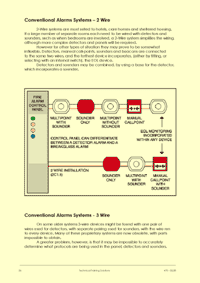 |
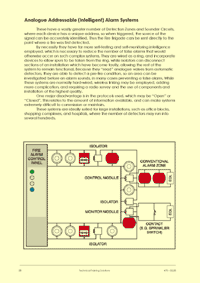 |
Page 35 of the course notes for the Fire Alarm System Design training course, describing the 4-Wire types of fire alarm panel |
Page 36 of the course notes for the Fire Alarm System Design training course, describing the 2-Wire types of fire alarm panel |
Page 38 of the course notes for the Fire Alarm System Design training course, describing the analogue addressable types of fire alarm panel |
We then examine the commonly used components of fire alarm systems, looking carefully at their advantages and disadvantages. We provide the candidates with a wide range of Manual Call Points, Detectors and Sounders as demonstration pieces.
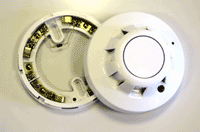 |
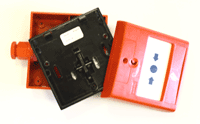 |
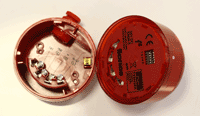 |
Some of the detector bases, Manual Call Points (MCPs) and sounders used as demonstration pieces for the candidates to look at on the fire alarm design training course |
||
We then analyse the requirements of BS5839 with respect to the positioning of MCPs, detectors, sounders and CIEs: Candidates on the Design of Fire Alarms course then look at how to perform the important battery capacity calculations and they practice doing these calculations on real systems. We also look at the certification requirements and practice completing the required paperwork, taken from appropriate parts of BS5839. In the practical exercises the candidates complete the relevant certificates as they go along.
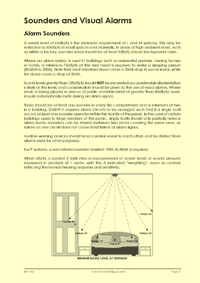 |
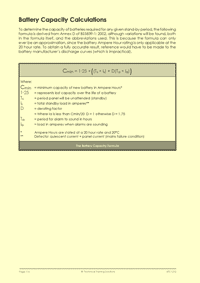 |
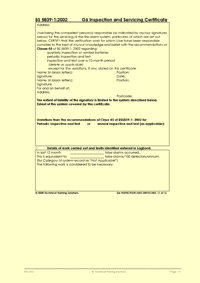 |
Page 77 of the course notes for the Fire Alarm System Design training course, describing how sound intensities vary within a room and beyond a door etc |
Page 116 of the course notes for the Fire Alarm System Design training course, describing how battery capacities should be calculated |
Page 111 of the course notes for the Fire Alarm System Design training course, presenting an example of one of the certificates. On the course the candidates look at all the certificates that may be required. |
Finally, candidates are given a specific category, a set of drawings for a particular type of building and asked to design a fire alarm system, producing all of the relevant drawings, documentation and certificates.
If you would like to see some of the equipment used on the Fire Alarm System Design training course for yourself, then please call us to arrange a visit to our offices in Kent. Alternatively, we can visit you anywhere in the British Isles.


